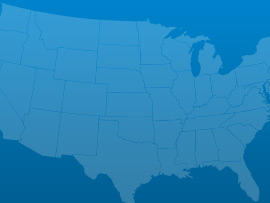Vermont has 1,219 dams in its state inventory and 198 (16%) of those structures are classified with a high-or significant-hazard potential. Vermont’s Dam Safety Program is understaffed and depends on voluntary actions by dam owners or a time-consuming state process for correcting safety deficiencies. Based on inspections completed in 2013, 35% of dams inspected were in poor condition. The Vermont Dam Safety Program relies heavily on educating dam owners of safety risks to motivate repairs. The financial burden of repairing or removing the poor-condition dams is estimated to be $22 million for all removals and $35 million for all repairs. Eight obsolete and unsafe dams have been removed from Vermont waters over the past five years, with three of the removals taking place in 2013. The majority of Vermont dams are the responsibility of private landowners that tend to have limited willingness to invest in maintenance and repairs. Vermont House Bill 590, considered by the Vermont legislature in 2014, could require registration of dams to improve public safety but has not become law yet.
 Bridges
Bridges Dams
Dams Drinking Water
Drinking Water Roads
Roads Solid Waste
Solid Waste Wastewater
WastewaterA: Exceptional, B: Good, C: Mediocre, D: Poor, F: Failing, ?: Incomplete
Each category was evaluated on the basis of capacity, condition, funding, future need, operation and maintenance, public safety, resilience, and innovation
Aviation
12 public-use airports
Bridges
251 of the 2,731 bridges are structurally deficient
Bridges
$29.20 million in bridge funds came from the Federal Highway Bridge Fund in 2011
Dams
78% of the state regulated dams have an Emergency Action Plan
Dams
40 high hazard dams
Drinking Water
$453 million in drinking water infrastructure needs over the next 20 years
Energy
1.829 gigawatt-hours of renewable energy every year, ranking it 39th
Hazardous Waste
11 sites on the National Priorities List
Levees
2 miles of levees
Public Parks
$65.0 million of unmet needs for its parks system
Rail
8 freight railroads covering 590 miles across the state, ranking 44th nationally by mileage
Roads
1,658 of the state’s 14,291 public roads are major roads, and 14% are in poor condition
Roads
$201.0 million a year in costs to motorists from driving on roads in need of repair, which is $379 /yr per motorist
Schools
$326.0 million in estimated school infrastructure funding needs
Transit
2.5 million annual unlinked passenger trips via transit systems including bus, transit, and commuter trains
Wastewater
$218.0 million in wastewater infrastructure needs over the next 20 years

March 03, 2017
As the President’s repeated in his address to Congress his pledge to dramatically increase infrastructure spending to the tune of $1 trillion, various Congressional Committees

March 01, 2017
On Tuesday night, President Trump addressed a joint-session of Congress for the first time in his presidency. Infrastructure was among the many issues he discussed.

February 28, 2017
U.S. motorists set a new record for vehicle miles travelled (VMT) in 2016, driving over 3.2 trillion miles, an increase of 70 billion miles from

February 17, 2017
Romantic dates, the Grammy awards and celebrating black history are not the only milestones of this week; the Oroville dam crisis in California and the